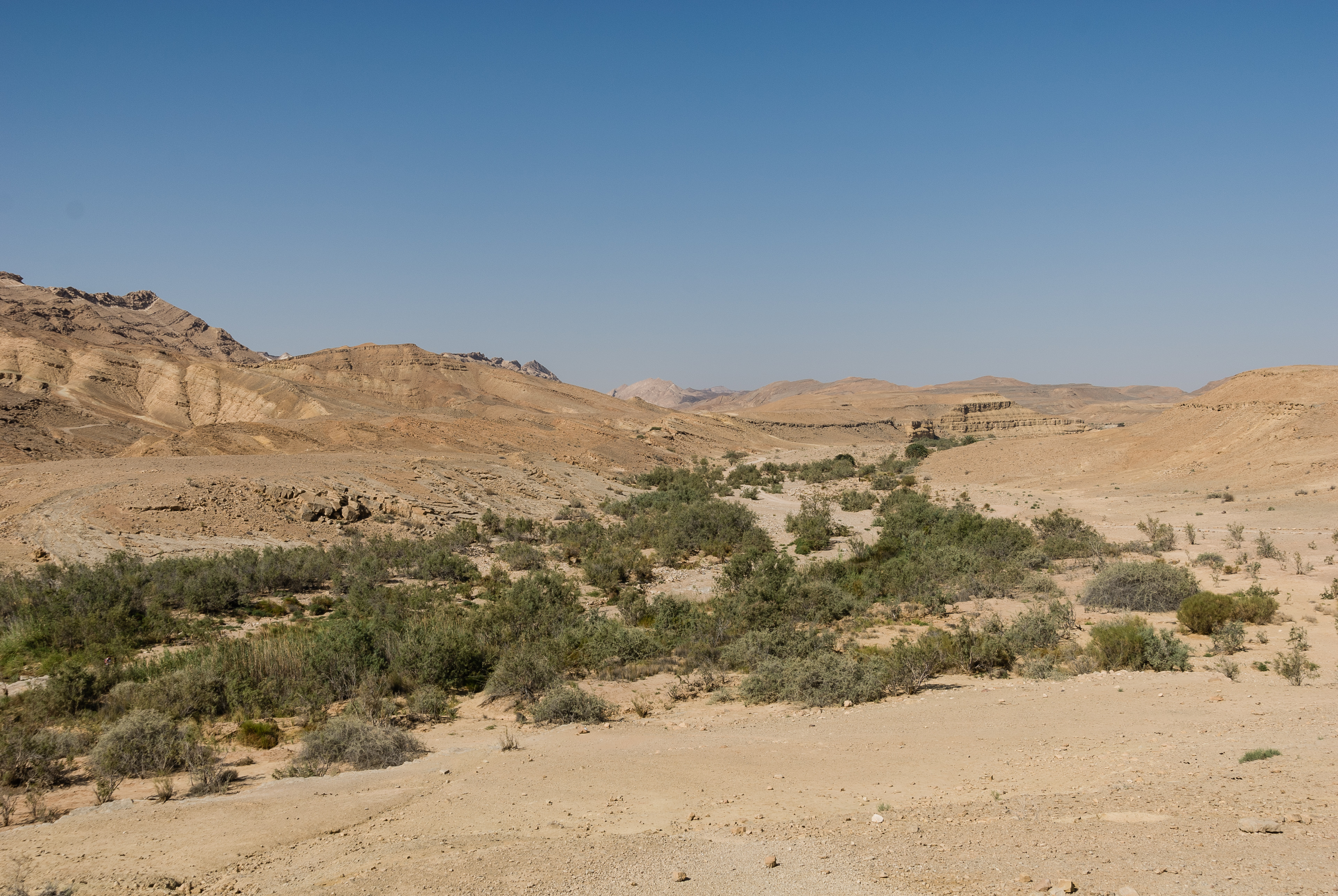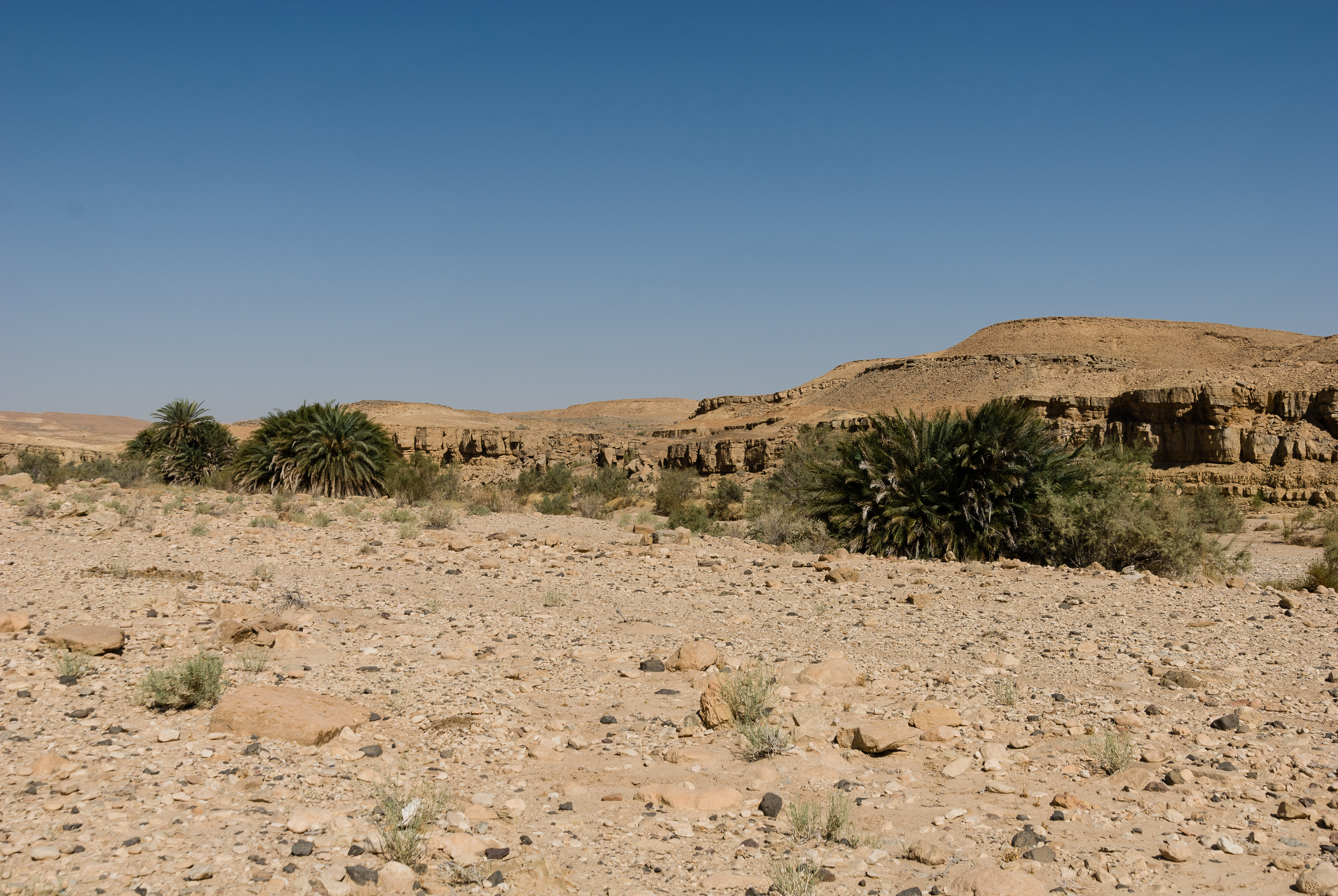2018
Photography by
Ronen Schmitz Even Zur
Israel
Khan Saharonim
In the early and middle Bronze Ages (fourth to third centuries BCE), people returned to the Negev. This is evidenced by the remains of oval houses, clustered like villages, discovered in and around Ramon Crater. It is possible that the open shrines and large rock piles found on the Saharonim Plateau were left by these people, and contain clues to their religion and rituals. The tribe of Simon inhabited the Negev during the settlement period (13th to 11th centuries BCE). Israelite rule of the Negev became more firmly established during the period of King David. During King Solomon's reign, a string of fortresses lined the Negev roads, marking the southern border of the Solomonic kingdom. The most impressive ruins from the Israelite period are the water-collection systems, which can be seen at the Lotz Cisterns, the Hemet Cisterns, and elsewhere. These sites border RCNR, and others are to be found in it.
The fall of the Kingdom of Judea gave rise to a new age in the Negev, the Nabatean period. Beginning in the fourth century BCE, the Nabatean traders and guides lead great caravans from southern Arabia and the Dead Sea area to the Mediterranean ports. Within Ramon Crater lies part of the ancient Incense Route, a famous trade route used by the Nabatean 2,000 years ago. The Incense route was recognized by UNESCO as a World Heritage site in 2010. Along this route, great camel caravans brought costly spices perfumes out of Arabia via Petra, through the Negev and on to Mediterranean ports. The ruins of the cities the Nabateans left behind attest to a flourishing culture and great wealth as can be seen in the remnant forts and guard towers that were built along the portion of the Incense Route that crosses Ramon Crater. Among them is Khan Saharonim (…), the ancient remains of a caravanserai, or roadside inn, located within the crater, an important stopover for caravans traversing this route.
Source
Ramon Crater International Starlight Reserve: International Dark-Sky Park Designation Nomination Package
by Dr. Noam Leader, Ecology Department, Science Division, Israel Nature & Parks Authority and
Dr. Guy Rotem, Ben-Gurion University, Israel
on ResearchGate















